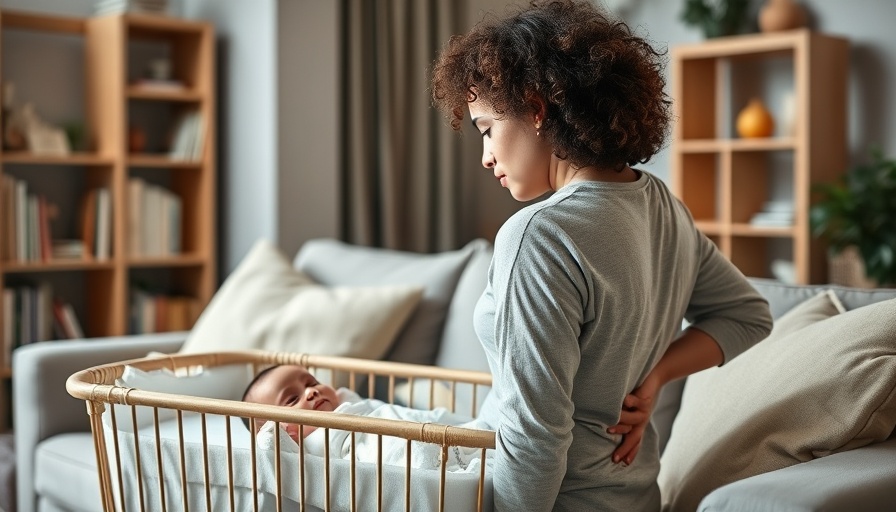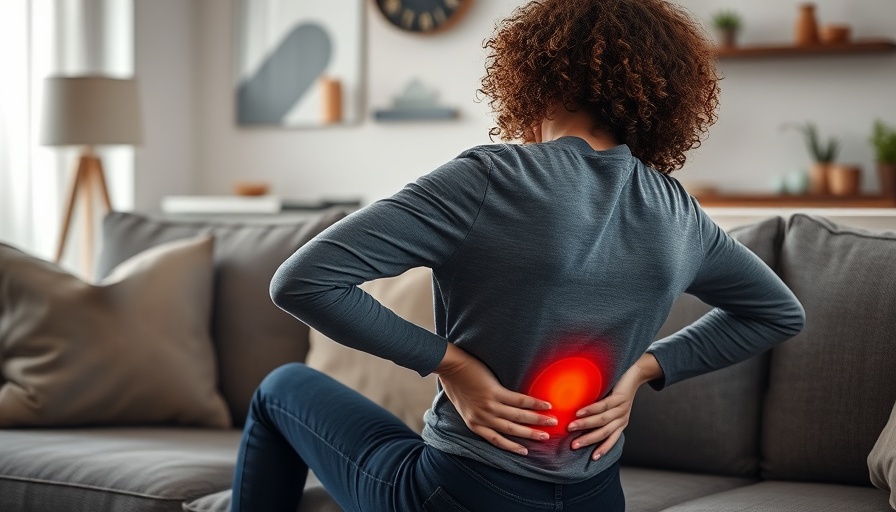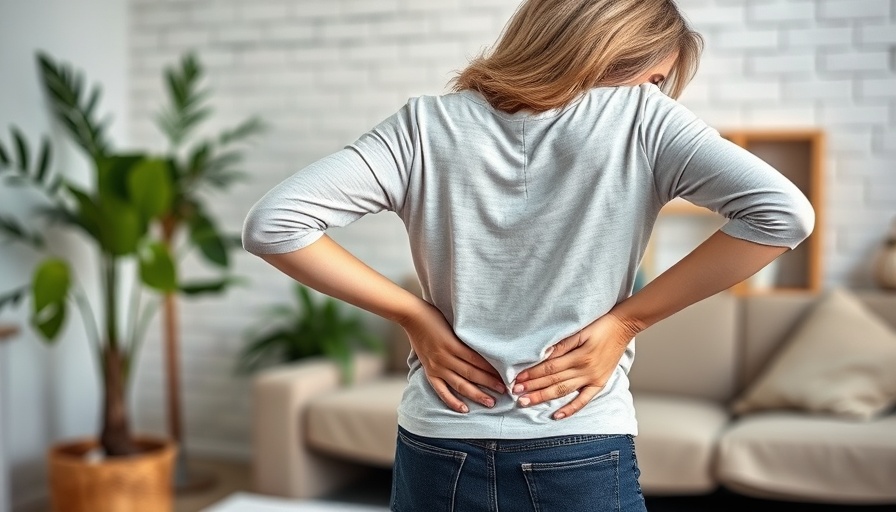
Understanding Pregnancy and Postpartum Back Pain
Back pain can feel like an unwanted companion during and after pregnancy, affecting nearly every aspect of new moms' lives. The changes a woman's body undergoes during this period, from hormonal fluctuations to physical strains, can lead to persistent discomfort. Unfortunately, this pain doesn’t just fade away after childbirth; postpartum challenges can extend the struggle as mothers adapt to lifting, carrying, and long hours spent breastfeeding.
Key Causes of Back Pain in Expecting and New Mothers
Understanding why back pain occurs is the first step to managing it effectively. Here are some key contributors:
- Hormonal Changes: Pregnancy triggers hormonal changes that relax ligaments and joints, preparing for delivery but also potentially increasing instability in the spine.
- Weight Gain: The weight gained postpartum shifts your center of gravity, resulting in greater spinal stress.
- Postural Adjustments: As your body changes, so does your posture, especially in the third trimester.
- Increased Sitting: Extended periods spent sitting while nursing or caring for a newborn can exacerbate discomfort.
Essential Strategies for Reducing Back Pain During Pregnancy
Managing back pain effectively calls for proactive measures. Here are some smart solutions expecting mothers can adopt:
- Maternity Back Cushions: Invest in an ergonomically designed maternity back cushion. These cushions support the spine's natural curve, relieving some of the pressure. BOD Support’s memory foam options are recommended for their ability to contour to your body, ensuring comfort throughout the day.
- Posture Awareness: Being mindful of your posture is crucial. Stand tall, keep your feet shoulder-width apart, and avoid locking your knees while sitting to prevent extra strain on your back.
- Adjust Sleeping Positions: Use body pillows to support your hips. Sleeping on your side with a pillow between your legs is an effective way to relieve tension on your lower back during rest.
Supportive Solutions for Postpartum Comfort
Once the baby arrives, the importance of back care remains paramount. Here are ways to support your back after delivery:
- Postpartum Cushion Support: A cushioning support like those from BOD Support is vital for new mothers frequently nursing or holding their babies. Such cushions can significantly reduce pressure on both the tailbone and spine, fostering recovery.
- Proper Lifting Techniques: Always lift with your legs, not your back! Keep your baby close to avoid twisting your spine, thereby minimizing the risk of injury.
- Stretch Breaks: Gentle stretching or postpartum yoga can be miraculous in relieving tension and enhancing flexibility. Even short sessions can make a significant difference in recovery.
Why Moms Recommend BOD Support
At BOD Support, it’s understood that comfort is indispensable, and their memory foam products have become a favorite among mothers. Each cushion is crafted to maintain high support while being soft enough to relieve soreness during:
- Work-from-home setups for expecting mothers
- Post-birth recovery
- Long breastfeeding sessions
- Outdoor activities like stroller walks
Choosing a supportive cushion can make a world of difference, transforming the experiences of motherhood into a more enjoyable journey.
A Call to Action for Community Wellness
Embracing motherhood should not be synonymous with enduring chronic back pain. It’s essential for new moms, especially those in Southern California, to seek out solutions that prioritize spinal health. Investing in ergonomic supports, practicing good posture, and incorporating stretching exercises into your daily routine are steps you can take right now. Don’t wait for pain to set in; equip yourself with the knowledge and tools you need to thrive.
Remember: healthy moms create a healthy family. Take proactive steps toward alleviating discomfort and ensuring your well-being today!
 Add Row
Add Row  Add
Add 




Write A Comment